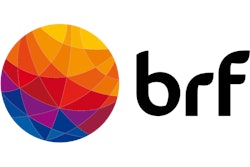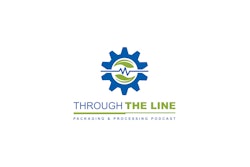Seeing food recalls and the FDA in news headlines is always an ominous feeling for brand owners and consumers alike. Pet owners were on high alert when news broke earlier this summer that some pet food brands were self-recalling because of salmonella risk. At unPACKed with PMMI, we went straight to an expert to get to the bottom of this latest scare, reaching out to Grace Danao from the Department of Food Science and Technology at the University of Nebraska. Professor Danao walks us through what happened, the impact on brands and the public and procedures like high-pressure processing that can be put in place to ensure something like this doesn't happen again.
To subscribe, rate, review, and find more unPACKED podcast episodes, visit pmmi.org/podcast or find us on Apple podcasts, Spotify or iHeart Radio.
 | Read the full transcript below |
Sean Riley:
So, before we dive into what can be a bit of a heavy topic, could we get you to give us a little bit of your background and tell us precisely what you do?
Grace Danao:
Sure. So my name is Grace Danao. I'm a faculty member at the University of Nebraska-Lincoln. I'm associated with the food science and technology department and its Food Processing Center. So at the university, I wear many hats, I'm your typical faculty member doing research and teaching, but at the same time, my third hat is really in university extension. And more specifically, I'm a value-added food processing specialist. That's a mouthful, but really I use my engineering skills to help small entrepreneurs or food manufacturers bring their products to market. And so one of the things that we have UNL is high-pressure processing. So I lead that laboratory.
Sean Riley:
Oh, that's cool; I did not know that part of the... It's almost like consulting as part of a value add; that's very interesting, but on with the topic. So what has been happening in the news with raw pet food recalls? I've followed it, so I've seen a little bit of it, but I guess if you could give our listeners a high-level thing about what's happening with that.
Grace Danao:
Yeah, absolutely. Over the years, we've seen growth in pet ownership, and pet parents, if you will, are looking for different or newer formats of pet foods. Thus we come upon some of the more minimally processed or raw pet foods out there. And some of these natural pet foods can be just the meat itself, served raw if you will. Or sometimes, I guess, as you scale up the process, you need to preserve that raw-meat product's quality and nutritional value. The raw product's quality and nutritional value to potentially, say, using HPP or other processing and preservation techniques so that you can deliver that food to a much wider region and audience. And then sometimes, to extend the shelf life, you might freeze-dry the food product, which you call HPP.
Sean Riley:
No, that's fascinating. And I guess I don't understand is that maybe you can help me, and hopefully, a listener who is as simple as I am. We see animals forging in the woods and eating raw things all the time. How can the food have stuff in it that would harm them? Does that make any sense? How will it hurt them if they eat food they typically eat in the wild, for lack of a better term? Because how's it "gone bad" when dogs eat out of the trash can sometimes and things like that?
Grace Danao:
Yeah, definitely. So going back to what we were talking about earlier, we have raw meats being served now to animals, or they could be lightly cooked. Still, the best preservation or pasteurization technique you can apply is high-pressure processing to keep it natural. And then after that, since many consumers are more used to the dry kibble, we introduced freeze-drying after HPP as another way to lower the water activity and maybe make that product more shelf stable, something you don't have to keep refrigerated and can last a long time. Now, granted, when we start talking about scaling up the process of making raw pet foods out there, whether or not it's just HPP or HPP plus freeze-dry, when you think about raw meats, even for yourself as a human being, when you buy raw meat from the grocery store, that is a ready-to-cook product. So you would cook it for yourself to consume. And in this case, with raw natural pet foods, some owners and pet parents prefer to feed it raw or minimally processed.
Grace Danao:
So it doesn't get that cooking step we usually use to kill salmonella, E. coli 0157, or listeria. I think this is the reason why we see food recalls. Sometimes those products are potentially not processed enough from the get-go, or they suffer from temperature abuse during distribution, if you will, or the consumer end, they don't store the product appropriately. So then, if there's any salmonella left over in the development, that could grow throughout the product's shelf life. And potentially dogs, or your pets, may not necessarily get sick, eating that, but when you think about people living in the home, that's a considerable food safety risk for them, you may have small kids, they're tiny, they touch everything. People let their pets kiss them to ensure that the pet food is safe; we want to make sure we use a process like HPP to pasteurize it and get rid of the salmonella and potentially other pathogens s that are in the product.
Sean Riley:
Oh, it is more for the pet owner, or the pet parent, the people in the house that may be handling the food, but it may not necessarily... My fear when I saw it was that this necessary might not necessarily harm the animals, correct?
Grace Danao:
Correct, yes. So I was actually at a conference recently, and one of the pet food manufacturers in there said when you're making pet foods out there, it's almost like making infant formula; it has to be super-duper clean because this is the only nutrition that the pet is getting, but humans are handling it, and people in their home may be immunocompromised. Or, as I said, you have children touching everything and putting their hands in their mouths. And so we want to make sure it's safe.
Sean Riley:
Interesting, yeah. The part I was confused by is, again, I have a dog, and I've seen her eat some things that she absolutely should not eat, and she has been excellent afterward. And that's where I got confused because I thought if we're serving this role, they should be okay with it. So I appreciate you clearing that up for me and making it more for the people in the house and the pet owners and pets for the people in the place and the owners and parents. So, how does your research and work at the University of Nebraska-Lincoln pertain to this? How do you work around this type of stuff?
Grace Danao:
Yes. So I'm a food engineer by training, and I look at different processes we can use to make food safe for pets and humans. And it just so happens that in the state of Nebraska, we already have many pet food manufacturers that use HPP, or high-pressure processing. So linking and collaborating with them led me to do some research projects on the safety of the raw ingredients in natural foods. And then looking at, well, if you choose to use HPP to pasteurize your food product, then how do you do that effectively? So looking at the balance of the cost of doing the HPP treatment, but also making sure that you still have a safe product at the end of the day. So we do many validation studies. So we introduce the pathogens and harmful microorganisms into the product, then we HPP it, and then we document and ensure that your HPP will lead to a safe product.
Sean Riley:
Oh, fascinating. Is this common among universities, or is Nebraska-Lincoln one of the schools leading this? This wouldn't be something I would think would be that common in terms of HPP, but again, this might be because I'm not entirely up to speed on it.
Grace Danao:
Yeah. No, I think there are a lot of excellent subject matter experts and university extension specialists at US universities. And so some of them have specialized, let's say, in helping food manufacturers understand, let's say, the food regulations better, or get certified with HACCP, or preventive controls, or just looking at nutritional labeling, if you will, and stuff. So the University of Nebraska-Lincoln values food safety greatly, and we have a lot of many subject matter experts on food safety topics. So we cover HACCP, obviously process validation in my lab, and somebody that does shop life studies. We also have a wonderful group that looks at food allergen control programs. So yeah, this is not necessarily unique to the University of Nebraska-Lincoln. Still, there are many universities out there; just part of their outreach and accession effort is to help food manufacturers.
Sean Riley:
So then, besides your research and the work you're doing back at the university, how else are you spreading the word about high-pressure processing?
Grace Danao:
So most of the time, I work with HPP service providers or tollers. So if they get contacted by a company and ask about HPP, then some of them would refer those companies to us and say, "Well, why don't you talk to the people over at the University of Nebraska-Lincoln? They can give you some introductory information or even test for you and conduct your validation and shelf life studies." But when it comes to, let's say, training the next generation, if you will, of food manufacturers or food engineers and food, training the next generation of food manufacturers or food engineers and scientists out there, I bring the topic of HPP into the classroom and also through some of our outreach efforts. So for example, recently, we've had some undergraduate students do research in my laboratory, so they get exposed to HPP technology, but I. Still, I also work with some high school students who are interested in preserving foods, especially those that need to be minimally processed or there's a desire to not over-process them. So then, I allow them to learn about HPP and incorporate it into some of their class projects.
Sean Riley:
Oh, that's cool, mainly because we do so many of these podcasts that talk about how there's a gap in our industry and manufacturing and packaging and processing, how we have a generational gap in terms of we're losing so many of the people that have been doing it for so long, and we need a workforce to fill that in. So that's cool that you're getting out there and getting kids young, interested, and knowledgeable about this industry that keeps things moving. It was one of the few things during the pandemic, for example, that didn't skip a beat because we had to continue to eat and use all the things that this provides. So that's a remarkable aspect of your job there.
Grace Danao:
Yeah, definitely. I think when we start talking about young people, not knowing where their food comes from, because so few of them may have the opportunity to, let's say, go on the farm or understand where their... They think it just magically up here at the stores. But it's part of; I think the fact that I wear a university-professor hat, if you will, that teaching is part of my job. It's teaching them that when you go to the grocery store, read the package labels, look at, let's say, an HPP salsa versus a retorted or shelf-stable salsa, allow them to begin understanding, "Well, how can I get salsa in two different formats, two different price points, two different kinds of quality, but then both of them are safe to consume?"
Sean Riley:
Yeah, that's great. And I guess, yeah, you're an educator at first, so that does tie to it. So I think the one thing we haven't hammered home during this is, what exactly are the benefits of high-pressure processing? If I came upon this podcast for the first time and was drawn to it because I saw the University of Nebraska or raw pet foods, what exactly is excellent about high-pressure processing?
Grace Danao:
So high-pressure processing is a well-documented pasteurization technique. We don't have to use super high temps to kill pathogens. Instead, what we do is we use super high pressures to do that. So there's much science that goes into it. So if a little bit of cell biology, you use pressure strains to denature the proteins in the microorganisms to the point that they're sublethally injured. They're like, "Oh my God, I've had this much stress," if you will, "I don't know if I can continue to live after HPP." And so afterward, for the most part, they continue to die, especially if there's the acid in the food product or some kind of an anytime. Eventually, some of them hem do recover.
Grace Danao:
So that's why it's a pasteurization technique, not a sterilization technique, but what's great about it is that HPP does not affect a lot of the components in your foods, for example, vitamins, minerals, some of the color pigments, they're not affected at all, whereas those. In contrast, those are commonly affected by high temperatures. So at the end of the day, you get an HPP-treated product that tastes fresh, looks fresh, and retains some of its raw-like qualities. Still, it's received the benefits of traditional pasteurization because it's killed the pathogens and some of the spoilage microorganisms.
Sean Riley:
Cool. So, I'm starting a company; I decided I would bring to market the family recipe that I want to get out there, and I wanted to be sold in stores, and I'm an emerging brand. How would I even start using something like this on my product?
Grace Danao:
So definitely, you can reach out to the university, so some of the extension services are out there. You can also, by looking online, you can find some of the high-pressure processing service providers or tollers. And by reaching out to them, they can give you some introductory information and hopefully connect you with a university specialist like me. There'sThere are certainly also some private laboratories out there that do testing on whether or not test whether its process validation or shelf life studies. So that's how you would start: doing your homework to figure out who's providing these HPP services. And then, from on, you start building your network on all the different companies and service providers surrounding that particular HPP service provider.
Sean Riley:
Perfect. And I'm going to have to find something I can bring to market that I can use HPP on. Thank you again, Grace, for taking time out of what I assume is a hectic schedule over there at the University of Nebraska-Lincoln to come on the podcast and talk us through this situation with the raw pet food and the HPP.





















